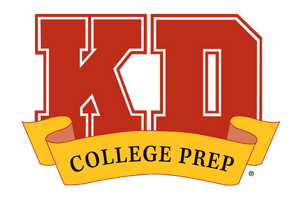Strong academics and good test scores are essential to get students into the college admissions game, but those prerequisites are no longer enough to ensure that a student will be a successful player. Colleges want to create a community of learners and assemble a group of students that will make up a well-rounded class. Students are accepted into colleges based on a wide assortment of criteria because universities are looking for people who demonstrate both quantitative excellence and strong qualitative pursuits in extracurricular activities.
With a competitive GPA and test score, your student might be in a pool of 30,000 similarly qualified applicants. Well-conceived, well-written essays help with the next cut, but the pool will still be very large. The secret to getting through the next round is for students to become deeply involved in activities that reflect their strengths and where they can make significant contributions.
Round One: Survive the Numbers Cut
If your student wants to get into a top college, then his or her GPA and test scores must be competitive. Most colleges use a data-sorting algorithm to process the thousands of applications they receive. Each applicant is given a score based on an academic scale; this score may factor in a weighted or unweighted GPA and will be taken into consideration within the context of his or her high school, rigor of courses, and test scores.
Thanks to advancements in technology, decisions on a vast number of applications are now made without ever being brought before a committee for review. Larger universities, in particular, are more likely to have the first review of applications done by a computer program. For many schools, these computer reviews are done within the context of a specific college: College of Engineering, College of Management, etc. This helps weed out applicants that fall far below the school’s academic averages.
It is true that some universities have strayed from using admissions committees altogether and rely more on computer-generated sorting and/or one or two readers for each application. However, in most elite universities and private liberal arts schools, admissions committees still play a significant role in the decision-making process.
Those applicants fortunate enough to make it through the first review will then go before the committee where admissions officers will discuss and review applications.
Round Two: Put Your Uniqueness on Display
GPA and test scores can be the sole reason a student is denied college acceptance, but, at the top universities, numbers are just one part of the process.
Once a school determines that your student’s quantitative stats are within the “range” of their acceptance policy, qualitative aspects about the student come into play in a significant way. In the past, students were encouraged to be “well-rounded,” which referred to students who participated in many different activities. Now, colleges look for students who are unique and focused, or, in other words, angular.
It is important that parents and students identify a student’s strengths, understand what makes each applicant unique, and then determine how the student can focus his or her energy to stand out from the crowd. Simply participating in extracurricular activities is no longer sufficient; to be competitive at the top schools, students must take on leadership roles in substantive activities. Parents can help students discover their strengths, find their niche, and search for a college that values who they are.
A student’s extracurricular activities are not a sprinkling of short-term and meaningless pursuits. Help your student choose extracurricular activities that they enjoy, and not just ones they think will impress an admissions reader. Don’t worry about your student checking all the boxes on an application, hoping to rise above the rest. These endeavors should accurately reflect who a student is and what he or she can do.
A student’s accomplishments outside the classroom show a college what that student is passionate about, and can also show qualities valued by colleges, such as leadership, intellectual curiosity, and compassion. Don’t let your student put off getting involved in extracurricular activities until his or her junior year. There are many types of extracurricular activities from which a student might choose: school-related activities, community activities, work, and volunteering. Extracurricular activities can introduce students to a lifelong passion, offer new perspectives, and help a student see his or her potential.
Additionally, these qualitative pursuits, the activities that can define a person and give meaning to their life, should not be seen simply as part of the college admissions process, but instead should be based on genuine passion and long-term interest.

